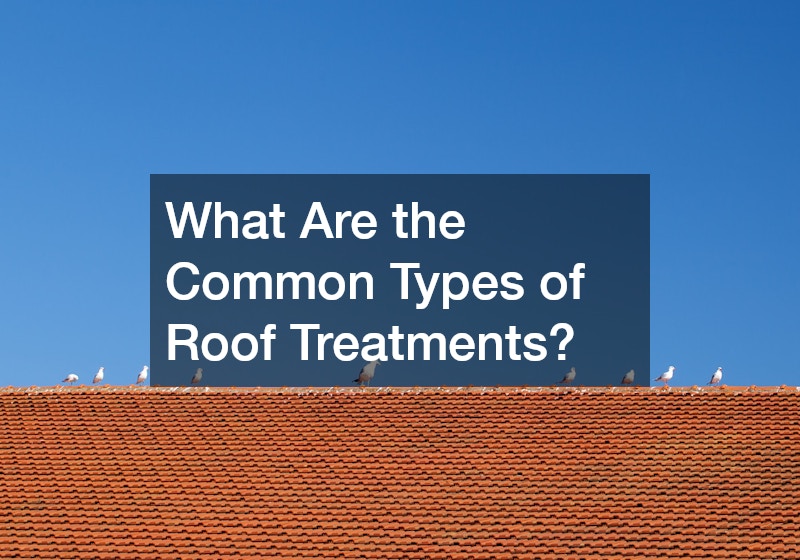
Roof treatments are essential in prolonging the lifespan of a roof while maintaining its aesthetic and functional qualities. These treatments can vary significantly depending on the roofing material, climate, and specific needs of the property owner. Understanding the common types of roof treatments can help property owners make informed decisions about maintenance and upgrades.
Video Source
Effective roof treatments not only protect the underlying structure but also enhance energy efficiency and curb appeal. In this article, we will explore several common types of roof treatments, their benefits, and important considerations for property owners.
Roof coatings are a popular choice for flat or low-sloped roofs, providing a seamless and durable protective layer. These coatings are typically made from materials such as silicone, acrylic, or polyurethane, each offering unique benefits tailored to specific roofing needs. By applying a roof coating, property owners can effectively extend the roof’s lifespan, reduce energy costs, and prevent leaks and water damage. The reflective properties of many roof coatings can also contribute to significant energy savings, particularly in warmer climates where cooling costs are a major consideration. Furthermore, roof coatings are generally low maintenance, requiring only occasional inspections to ensure continued performance.
One of the key advantages of roof coatings is their ability to enhance the roof's aesthetics, offering a fresh new look without the need for extensive renovations. This visually appealing upgrade can significantly increase property value and appeal to potential buyers. Additionally, eco-friendly roof coatings can reduce the heat island effect and help protect the environment by reflecting sunlight. When selecting a roof coating, property owners should consider factors such as the existing roof material, climate conditions, and desired longevity. A professional assessment can guide homeowners in making the most appropriate choice for their specific roof treatment needs.
Roof sealants are a vital treatment option often used to repair leaks and protect roofs. These sealants create a waterproof barrier, preventing elements such as rain, snow, and debris from infiltrating the roofing system. Ideal for both flat and sloped roofs, roof sealants can be made from various materials, including rubber, silicone, or asphalt-based compounds. By filling in gaps, cracks, and seams, sealants can significantly reduce the risk of leaks and prolong the life span of the roofing material. Their application can often be a quick and cost-effective solution to common roofing problems.
The use of roof sealants can also enhance the overall energy efficiency of a building. When applied strategically, sealants can help regulate indoor temperatures by reducing drafts and heat loss. This contributes not only to a more comfortable living environment but also to lower heating and cooling costs over time. Some sealants are designed to have reflective properties, further assisting in energy savings during hot weather conditions. As such, selecting a high-quality roof sealant with energy-efficient features offers dual benefits of protection and cost savings.
Regular roof repairs and maintenance are essential components of effective roof treatments. Over time, even the most durable roofing materials can succumb to wear and tear, necessitating periodic inspections and repairs. This routine maintenance can include anything from replacing broken shingles to resealing flashing around chimneys and vents. Addressing these issues promptly can avoid more extensive damage that could result in costly repairs or a complete roof replacement. Homeowners should aim to schedule roof inspections at least once a year and after severe weather conditions.
In addition to addressing immediate repairs, structured maintenance plans can significantly extend the lifespan of a roof. Regular cleaning of gutters and roof surfaces can prevent water buildup that leads to leaks and structural damage. Furthermore, trimming overhanging branches can reduce the risk of roof damage from falling debris, while also deterring pests that could undermine the roof's integrity. Engaging with professional roof maintenance services can ensure comprehensive care for a property, offering peace of mind. Ultimately, a proactive roof maintenance plan saves homeowners money by minimizing the risk of larger repairs down the road.
Finally, staying on top of roof maintenance can enhance a property’s curb appeal, which can be critical when considering resale value. A well-maintained roof not only looks good but also reassures potential buyers of the structural integrity of the home. This can be particularly important in competitive real estate markets where first impressions significantly impact buyer decisions. By investing in regular roof treatments, homeowners not only protect their investments but also increase the attractiveness of their property. Ultimately, thorough maintenance and timely repairs remain cornerstones of effective roof treatment strategies.
